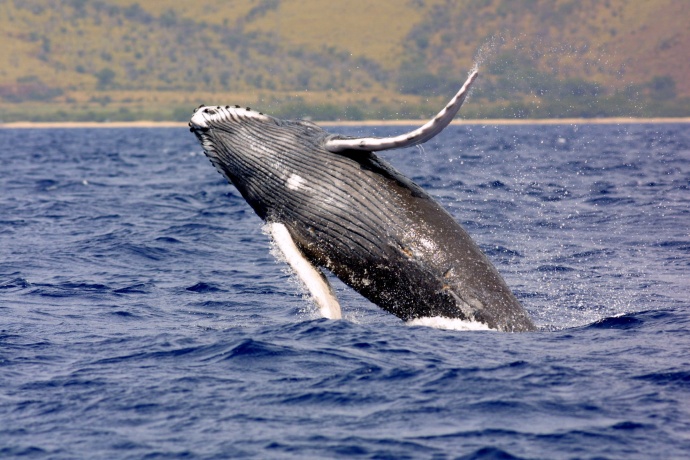NOAA Proposes Removal of Humpback Whale from Endangered List

NOAA’s proposal to reclassify humpback whales into 14 distinct population segments will offer fisheries managers a more tailored conservation approach. (Credit: NOAA)
By Maui Now Staff
The National Oceanic and Atmospheric Administration Fisheries division today proposed the reclassification of the humpback whale into 14 distinct population segments under the Endangered Species Act.
NOAA officials say the proposal is aimed at providing a more tailored management approach for US fisheries managers.
According to information released by NOAA today, protection and restoration efforts over the past four decades have led to an increase in numbers and growth rates for humpback whales in many areas.
The proposed rule finds that ten of those 14 populations do not warrant listing under the Endangered Species Act.
“While commercial whaling severely depleted humpback whale numbers, population rebounds in many areas result in today’s larger numbers, with steady rates of population growth since the United States first listed the animal as endangered in 1970,” NOAA officials said in a press release issued today.

Approximate locations of proposed humpback whale distinct population segments: 1. West Indies, 2. Cape Verde Islands/Northwest Africa, 3. Western North Pacific, 4. Hawaii, 5. Mexico, 6. Central America, 7. Brazil, 8. Gabon/Southwest Africa, 9. Southeast Africa/Madagascar, 10. West Australia, 11. East Australia, 12. Oceania, 13. Southeastern Pacific, 14. Arabian Sea. (Credit: NOAA)
Also under the proposal, two of the other four populations would be listed as endangered and the remaining two would be listed as threatened.
The two populations proposed as threatened – the Central America and the Western North Pacific – at times enter US waters. Two other populations that do not enter US waters – in the Arabian Sea and off Cape Verde Islands/Northwest Africa – would remain listed as endangered.
If the proposal is finalized, NOAA officials say the humpback whale populations that would no longer be listed under the Endangered Species Act would still remain protected under the Marine Mammal Protection Act.
The proposal come after a review conducted by the Fisheries division in 2010, which found that many of the populations do not fall into endangered or threatened categories.
“The return of the iconic humpback whale is an ESA success story,” said Eileen Sobeck, assistant NOAA administrator for fisheries in a press release statement. “As we learn more about the species–and realize the populations are largely independent of each other–managing them separately allows us to focus protection on the animals that need it the most.”
A 90-day public comment period is now open. Comments, identified with the code “NOAA-NMFS-2015-0035” can be submitted via the Federal eRulemaking Portal by clicking the “Comment Now” icon and completing the required fields. Written comment can also be submitted to the Office of Protected Resources at: NMFS, 1315 East-West Highway, Silver Spring, MD 2091.










